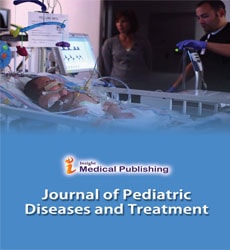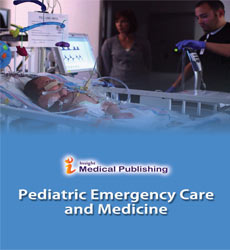Advanced Imaging Techniques of Structural Heart Diseases
Meghu Lokesh
DOI10.36648/ippecm.21.6.18
Meghu Lokesh
Department of Pharmacy, Jawaharlal Nehru Technological University, Hyderabad, Telangana, India
*Corresponding author: Meghu Lokesh, Meghu.L015@gmail.com, Department of Pharmacy, Jawaharlal Nehru Technological University, Hyderabad, Telangana, India. Citation: Lokesh M (2021) Advanced Imaging Techniques of Structural Heart Diseases. Pediatr Emerg Care Med Open Access. Vol.6 No.4:18
Three-dimensional imaging has become a necessity to facilitate our understanding and contemporary treatment of congenital and structural heart disease. The volumetric data acquired by CT, MRI, 3DRA, and real time 3DTEE provide excellent spatial reconstructions of complex static and dynamic anatomies, respectively. These reconstructions can be presented as 3D (printed) models, stereoscopic or holographic images. Modern imaging platforms allow routine creation and overlay of 3D reconstructions on 2D fluoroscopy for guidance of cardiac catheterizations. The experience of true depth perception in a 3D medical image, free from the confines of a 2D display, is a refreshingly new experience that for the first time allows the operator to intuitively comprehend and interact with patientspecific anatomy. As interventions in free 3D space progress to treat failing valves, ablate complex arrhythmias or construct anatomical pathways, the potential impact of these newer forms of visualization and the advantages over using standard 2D displays, will have to be evaluated in clinical trials. Three-dimensional rotational angiography This methodology comprising of rotational angiography (RA) and 3D remaking has filled in as a significant intra-procedural imaging instrument for longer than 10 years in neuroradiology, electrophysiology, and underlying and innate heart intercessions. Most top of the line X-beam frameworks have the ability to perform 3DRA. The initial step incorporates RA performed more than 4-6 s at high velocity single-plane 180-240° revolution around the objective design. There are various specialized contemplations which effect picture quality. To restrict movement antiquity, the investigation is performed during an expiratory breath-hold. Most ordinarily, weakened contrast is infused proximal to the site of sore. Variable time delay between the start of the C-arm development and differentiation infusion is set to prefill the space of interest. For chose life structures, a few concurrent infusion destinations are used to ideally prefill the objective compartment. A model is the complete cavopneumonic association in which differentiation must be infused to the predominant and sub-par vena cavae for representation of the whole Fontan pathway. Another model is concurrent left and right ventricular differentiation infusion to give two datasets for correlation of the connections of the right ventricular outpouring lot, pneumonic supply routes, aorta, and coronary courses. Ventricular pacing empowers transitory decrease of the cardiovascular yield and subsequently restricts contrast washout from the space of interest, in any case, this can altogether reduce systolic-diastolic variety of vessel widths and alert should be applied when taking estimations for gadget choice. Fusion imaging Fusion imaging depends on the reutilization of pre-enrolled CT, MRI or 3DRA datasets for making of a 3D recreation and overlay on live 2D fluoroscopic pictures. It ordinarily incorporates four stages: division, arranging, enlistment, and live direction. In the initial step, after combination programming has consequently made a volume rendered 3D remaking from a crude CT, MRI, or 3DRA dataset, manual division is performed by featuring and choosing the ideal locale of interest on the 3D reproduction or symmetrical multiplanar recreations. The 3D reproduction can be additionally controlled by featuring key constructions with stamping rings/ focuses or shading coding, performing estimations, and choosing the best angulations for survey the arranged mediation. The third stage is combination of live fluoroscopy and the controlled 3D reproduction by utilizing vessel borders imagined with infusion of a limited quantity of differentiation medium or inside markers like hard designs, shadows of the heart and incredible vessels, calcifications, or recently embedded gadgets. At last, live direction of the method is performed with the 3D guide overlaid and introduced in a few delivering modes, with or without checking rings/focuses.

Open Access Journals
- Aquaculture & Veterinary Science
- Chemistry & Chemical Sciences
- Clinical Sciences
- Engineering
- General Science
- Genetics & Molecular Biology
- Health Care & Nursing
- Immunology & Microbiology
- Materials Science
- Mathematics & Physics
- Medical Sciences
- Neurology & Psychiatry
- Oncology & Cancer Science
- Pharmaceutical Sciences
